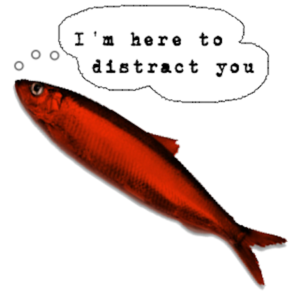
I’ve’ve written before about what we like to call the Fog of Wine; the feeling that finding your way in the world of wine is like wandering in a misty landscape where the trail is hard to keep to and waypoints uncertain. I don’t actually believe that in this regard wine is any more difficult to deal with than other subjects, where the material to be learned is extensive and often in flux. People who follow a sport or politics or the literary scene with enthusiasm have as much to master and somehow manage it. One doesn’t often hear, when speaking of these subjects, as one does of wine, that they’re in need of demystification.
But wine, wherever it might lie along the subject matter degree-of-difficulty spectrum, is done no favors by well-meaning folk who, in their determination to provide some kind of key to its intricacies, deliver instead simplifications that are at best misleading.
Among these red, white and rosé herrings, I’d count the idea that one can definitively answer the what kind of wine is this? question merely by noting the constituent varietial(s), while ignoring the equally powerful influences of place and style. See also the loopy notion that the infalible mark of wine tasting expertise is a nimble facility in teasing out as many identifiable scent or flavor elements as can be found lurking furtively in the glass. Fun but inconsequential.
Nonetheless, it is possible for simplifications to be something other than misleading. This can happen when a rule-of-thumb, while inadequate to the larger task it sets itself, serves the longer view by giving you something to work with until its shortcomings compel you to adjust, restate or abandon it and move on to a more robust and satisfying formulation.
So pursue your red herring if and while you must, but try not to forget you’ve got bigger fish to fry.